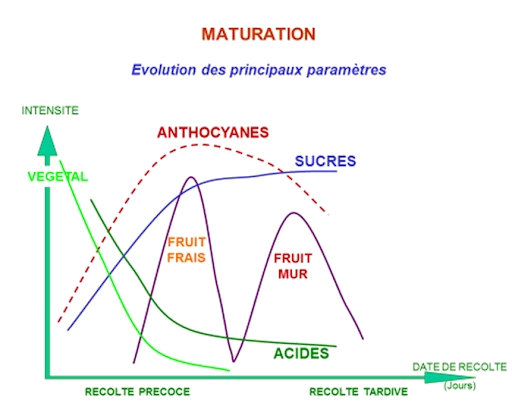For white grapes
The definition of ripeness depends on the type of wine being produced. Ripeness for a white wine can be reached relatively early if the goal is to preserve freshness and certain thiolated aromas. Some white grapes, however, may be allowed to ripen further in order to enhance their characteristics, as is sometimes the case at Château Grillet, where the Viognier takes on more terpenic notes. Generally, white grape ripeness comes down to the sugar/acid balance and the aromatic potential.

